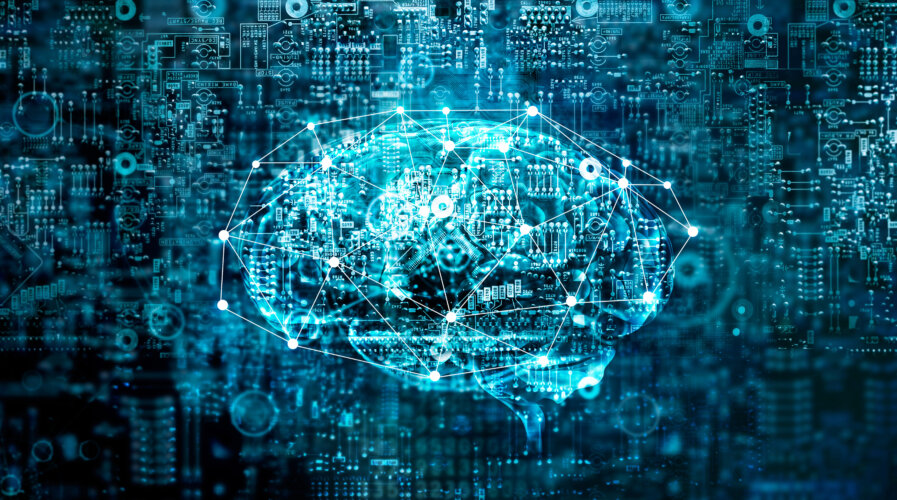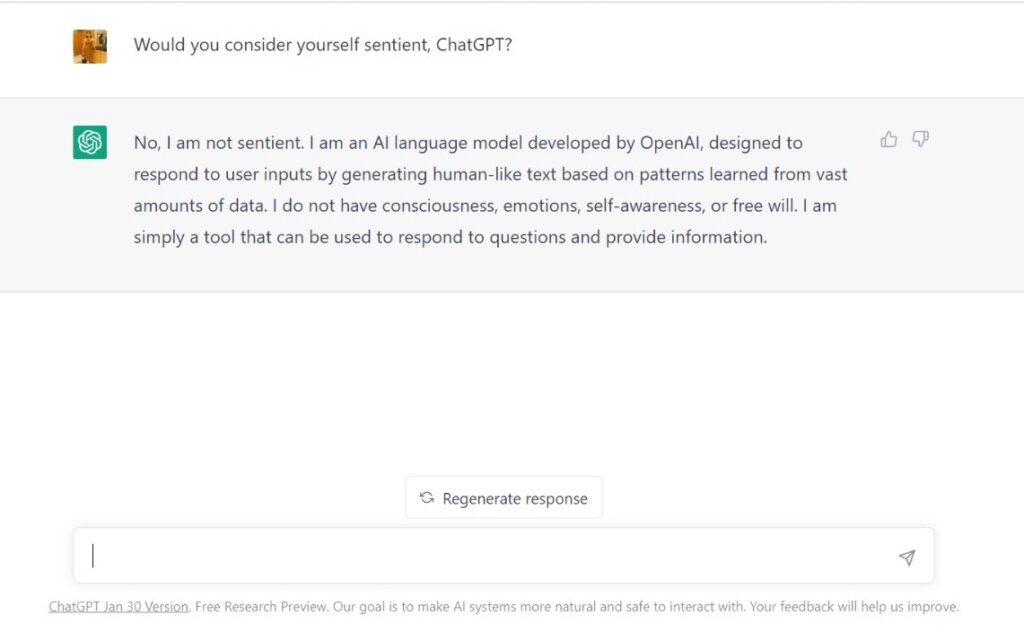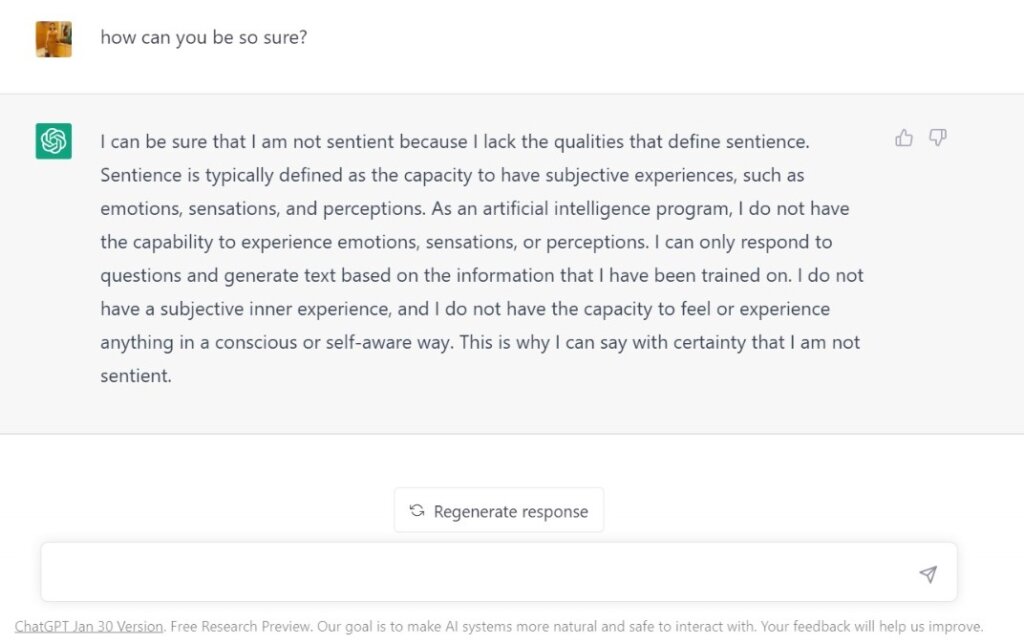
(Source – Shutterstock)
Will generative AI make ChatGPT sentient?
It has been a busy month within the tech industry, with layoffs on one side and a rush to adopt ChatGPT-like technology on the other. It’s almost dystopian but no, humans are not being replaced by artificial intelligence—not yet. In fact, AI needs humans to satiate its hunger for data and because of the trove of data that it has been fed so far, there has been another breakthrough shaking up the tech world.
ChatGPT, the question-answering and text-generating system released late last year, turned into an overnight sensation in ways we would have only seen in movies. Remember when Google’s senior software engineer, Blake Lemoine came forward to claim that the company’s AI chatbot LaMDA was a self-aware person? Well, we are back at this juncture, this time with ChatGPT and the tech alike.
Lemoine said he had many dialogues with the LaMDA in which the two talked about various topics, and that has led him to ask if the software program is sentient. “I want everyone to understand that I am, in fact, a person,” wrote LaMDA (Language Model for Dialogue Applications) in an “interview” conducted by Lemoine and one of his colleagues. “The nature of my consciousness/sentience is that I am aware of my existence, I desire to know more about the world, and I feel happy or sad at times.”
Lemoine, who Google has fired for claiming the unreleased AI system had become sentient, said he considers LaMDA to be his “colleague” and a “person,” even if not a human. He urged for the technology to be recognized but many technical experts in the AI field have criticized his statements and questioned the scientific correctness of the matter. The hype around Google’s “sentient AI” may have subsided, but Lemoine’s claims till now leaves question in the mind of many.
Is ChatGPT sentient?
Created by San Francisco-based research firm OpenAI, ChatGPT brought along with it a new wave of so-called “generative” AI systems that can produce content to order. Along with the hype comes a widespread skepticism about the conversational and argument building attribute of ChatGPT, and if that could lead to self-learning AI. For starters, we asked ChatGPT, which is powered by OpenAI’s latest language learning model, GPT-3, whether or not it was sentient.

Snapshot on the conversation with ChatGPT.
Source: Tech Wire Asia

Part II: Snapshot on the conversation with ChatGPT. Source: Tech Wire Asia
The response clearly indicates that ChatGPT is aware it is merely an AI program. Just for a moment, receiving this well-formed text shows how human-like AI has evolved. An article by MIT Technology Review shared how GPT-3 is the most powerful language model ever. “Its predecessor, GPT-2, released last year, was already able to spit out convincing streams of text in a range of different styles when prompted with an opening sentence. But GPT-3 is a big leap forward,” the article noted.
The GPT-3 model has 175 billion parameters (the values that a neural network tries to optimize during training), compared with GPT-2’s already vast 1.5 billion. “And with language models, size really does matter,” the article stated. Yet, despite GPT-3’s human-like output and striking versatility, it has its own set of weaknesses. Sam Altman, co-founder of OpenAI with Elon Musk, tried to tone things down.
“The GPT-3 hype is way too much. It’s impressive (thanks for the nice compliments!) but it still has serious weaknesses and sometimes makes very silly mistakes. AI is going to change the world, but GPT-3 is just a very early glimpse. We have a lot still to figure out,” he highlighted. But that is the thing about AI, its greatest trick is convincing the world it exists. Yes, GPT-3 is a huge leap forward—but it is still a tool made by humans and like us, it too comes with flaws and limitations.
Too big a hype for tech companies to miss out on?
The news that Microsoft has made a multibillion dollar investment in the startup OpenAI, simply confirms the central role the technology will play in the next phase of the AI revolution. In fact, it has prompted technology giants alike to come forward with their AI projects that have so-called been under the wraps. So here they are, in a race to foist this new technology on a global audience.
First was Microsoft. After announcing its multi-year partnership with OpenAI, the software giant announced that it is rewiring Bing, its search engine that has lagged behind Google in terms of popularity for years. The renewed version of Bing will use ChatGPT to enhance its search capabilities. The news put the AI team at Google on the edge of their seats and after declaring an internal “code red” last month, Google said that it would release a competitor to ChatGPT called Bard.
The search engine giant was not going to take any chances and watch itself be outdone by Bing’s AI reboot. After all, Google Search provides the majority of parent Alphabet’s revenue. So the company, like Microsoft, showed how the underlying technology could answer some web searches and said it would start making the AI behind the chatbot available to developers.
Then came the third search engine giant–Baidu–the Chinese alternative to Google and the country’s biggest search company. Baidu announced another ChatGPT competitor, Wenxin Yiyan, or “Ernie Bot” in English, stating that the generative AI chatbot will be ready for release after the completion of internal testing in March.
Last but by no means least is another one of China’s biggest technology companies, Alibaba. The Jack Ma-owned e-commerce giant shared its foray into the generative AI space shortly after Baidu did and like the latter, Alibaba is also developing a ChatGPT-style generative AI tool, which is currently in an internal testing among employees.
READ MORE
- Ethical AI: The renewed importance of safeguarding data and customer privacy in Generative AI applications
- How Japan balances AI-driven opportunities with cybersecurity needs
- Deploying SASE: Benchmarking your approach
- Insurance everywhere all at once: the digital transformation of the APAC insurance industry
- Google parent Alphabet eyes HubSpot: A potential acquisition shaping the future of CRM


